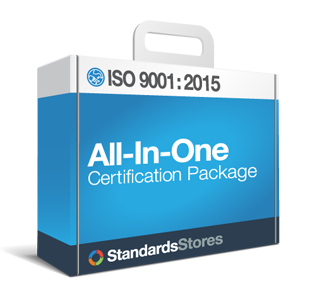ISO 9001:2015 Clause 9.2 Internal Audit
ISO 9001:2015 Clause 9.2 Internal Audits are a Quality Management System’s best friend. Audit findings lead to great improvement in the effectiveness and efficiency of the system. How can you make your internal audit program work for your organization? Start by training your audit team so they have the knowledge and tools to be effective auditors.
Learn More: Who can perform Internal Audits?
Learn More: ISO 9001:2015 Internal Auditor Training Options
Here are some tips to help get the most from your internal audits.
- Make sure the authority of the audit team is established and the auditors are trained and independent of the areas they are to audit. This will increase the cooperation from auditees.
- Decide what areas of the company will be audited and the frequency of the audits.
- Then prepare a yearly audit schedule and distribute.
- Develop an audit plan.
- Decide what other audit resources are needed – checklists, other auditors?
- Determine the purpose of the audit –
- is it an overview of the area being audited
- or is it to concentrate on a specific system within the area?
- Determine the purpose of the audit –
- is it to comply with government regulations, quality standards, internal procedures and system?
- Hold a meeting with the auditors to discuss the plan, purpose, and scope of the audit.
- Read the documents you will be auditing against. Know what they say. Develop questions to ask the auditees.
- Conduct an opening meeting with the auditees.
Learn More: Auditing Without a Procedure
During an Audit
- Be professional at all times. Avoid being judgmental.
- Follow safety procedures, clean room procedures, and all other required procedures.
- Explain the purpose of the audit to the auditees.
- Answer questions or discuss compliance problems brought to your attention by auditees.
- Be flexible – if you find a potential problem not within the scope of the audit – evaluate the potential risks of the problem if left unaddressed.
- Encourage honesty with the auditees.
After the Audit
- Hold an auditors meeting to discuss the closing meeting content.
- Hold a closing meeting with all auditees involved with the audit.
- First, point out what was done well.
- Second, address the nonconformances and ensure the auditees understand the nonconformance and what part of the standard is not met.
- Issue the audit report in a timely manner.
*Encourage auditees to decide on the corrective actions. Allowing auditees to have input will give them ownership in implementing changes. - Assist those responsible for completing the corrective actions with setting reasonable deadlines. The correct action deadlines may vary depending on the severity of the nonconformity.
- Be available and willing to help the auditees.
- Ask for feedback on how you and your audit team were perceived – adjust your approach if necessary.
- One last tip: Involve people!
Use audits as opportunities to train others. Ask for a volunteer (who is not an auditor) to walk through the audit process with you as an assistant. This will provide others with a better understanding of what audits are and why they are necessary.
Involving people creates a feeling that everyone is a vital contributor to the goal of the company – compliance.
If you are interested in ISO 9001 Internal Auditor Training, we have several great options for your organization to choose from.
Learn More: ISO 9001 Internal Auditor Training Options


